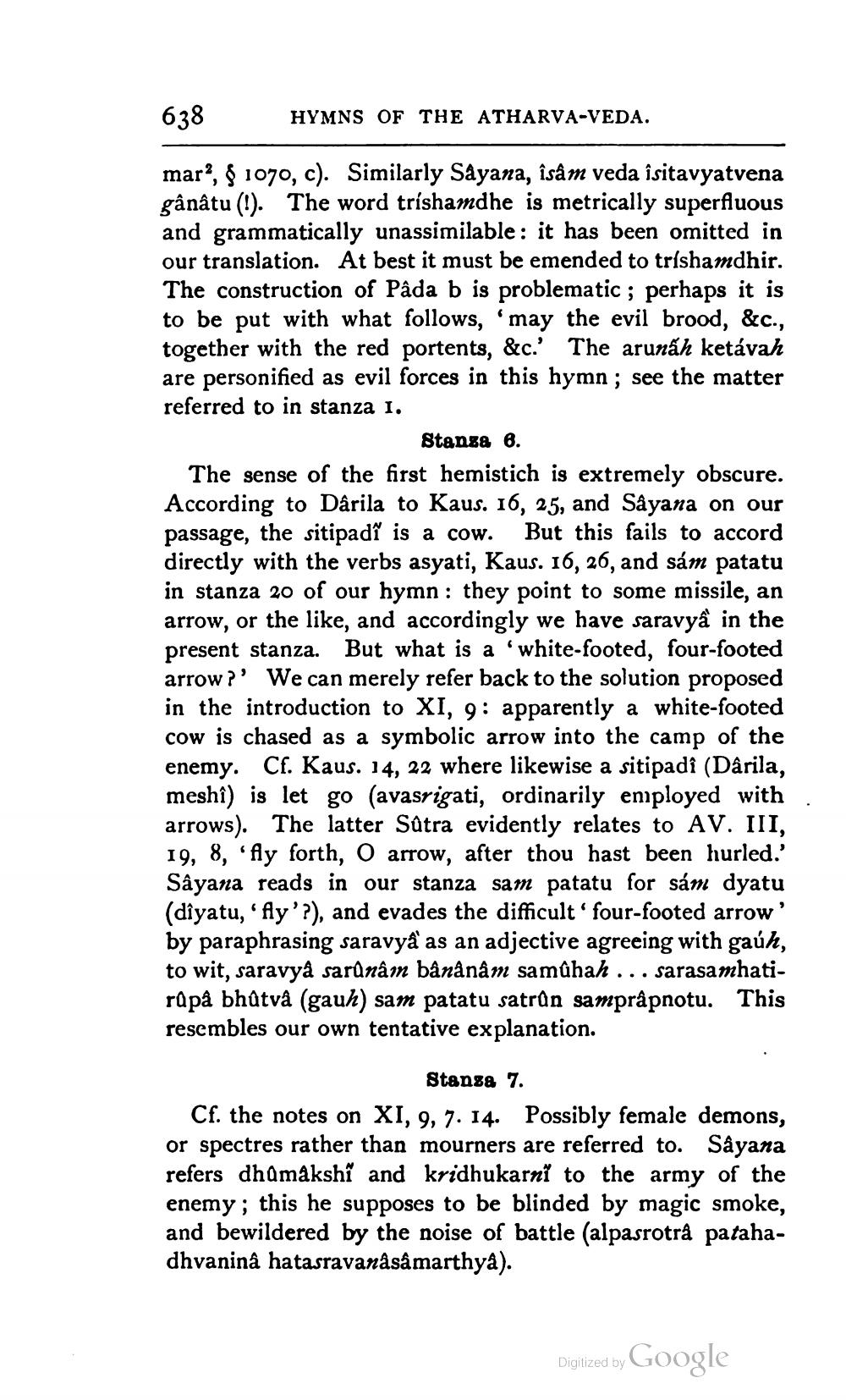________________
638
HYMNS OF THE ATHARVA-VEDA.
mar?, § 1070, c). Similarly Sayana, îsâm veda isitavyatvena gânâtu (!). The word trishamdhe is metrically superfluous and grammatically unassimilable: it has been omitted in our translation. At best it must be emended to trishamdhir. The construction of Pâda b is problematic ; perhaps it is to be put with what follows, 'may the evil brood, &c., together with the red portents, &c. The arunah ketávah are personified as evil forces in this hymn; see the matter referred to in stanza 1.
Stansa 6. The sense of the first hemistich is extremely obscure. According to Dârila to Kaus. 16, 25, and Såyana on our passage, the sitipadî is a cow. But this fails to accord directly with the verbs asyati, Kaus. 16, 26, and sám patatu in stanza 20 of our hymn : they point to some missile, an arrow, or the like, and accordingly we have saravyâ in the present stanza. But what is a 'white-footed, four-footed arrow?' We can merely refer back to the solution proposed in the introduction to XI, 9: apparently a white-footed cow is chased as a symbolic arrow into the camp of the enemy. Cf. Kaus. 14, 22 where likewise a sitipadi (Dârila, meshî) is let go (avasrigati, ordinarily employed with arrows). The latter Sûtra evidently relates to AV. III, 19, 8, 'Ay forth, O arrow, after thou hast been hurled.' Sâyana reads in our stanza sam patatu for sám dyatu (dîyatu, 'Ay'?), and evades the difficult' four-footed arrow' by paraphrasing saravyå as an adjective agreeing with gaúh, to wit, saravyà sarunām bânànâm sa mühah ... sarasamhatirūpå bhùtvå (gauh) sam patatu satran samprâpnotu. This resembles our own tentative explanation.
Stansa 7. Cf. the notes on XI, 9, 7.14. Possibly female demons, or spectres rather than mourners are referred to. Såyana refers dhamakshi and kridhukarni to the army of the enemy; this he supposes to be blinded by magic smoke, and bewildered by the noise of battle (alpasrotrà patahadhvaninâ hatasravanâsâmarthya).
Digized by Google




